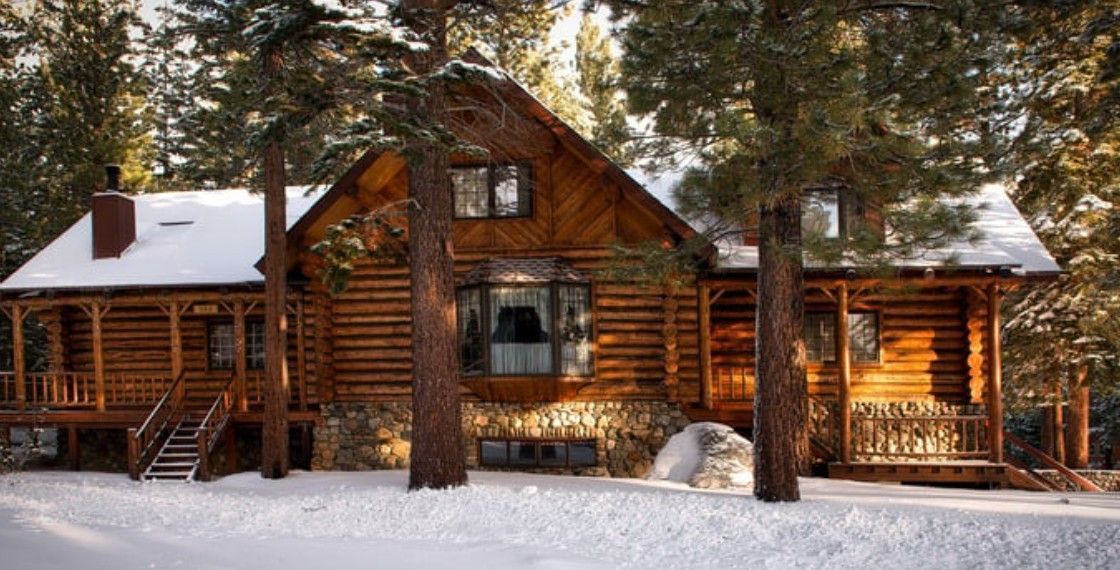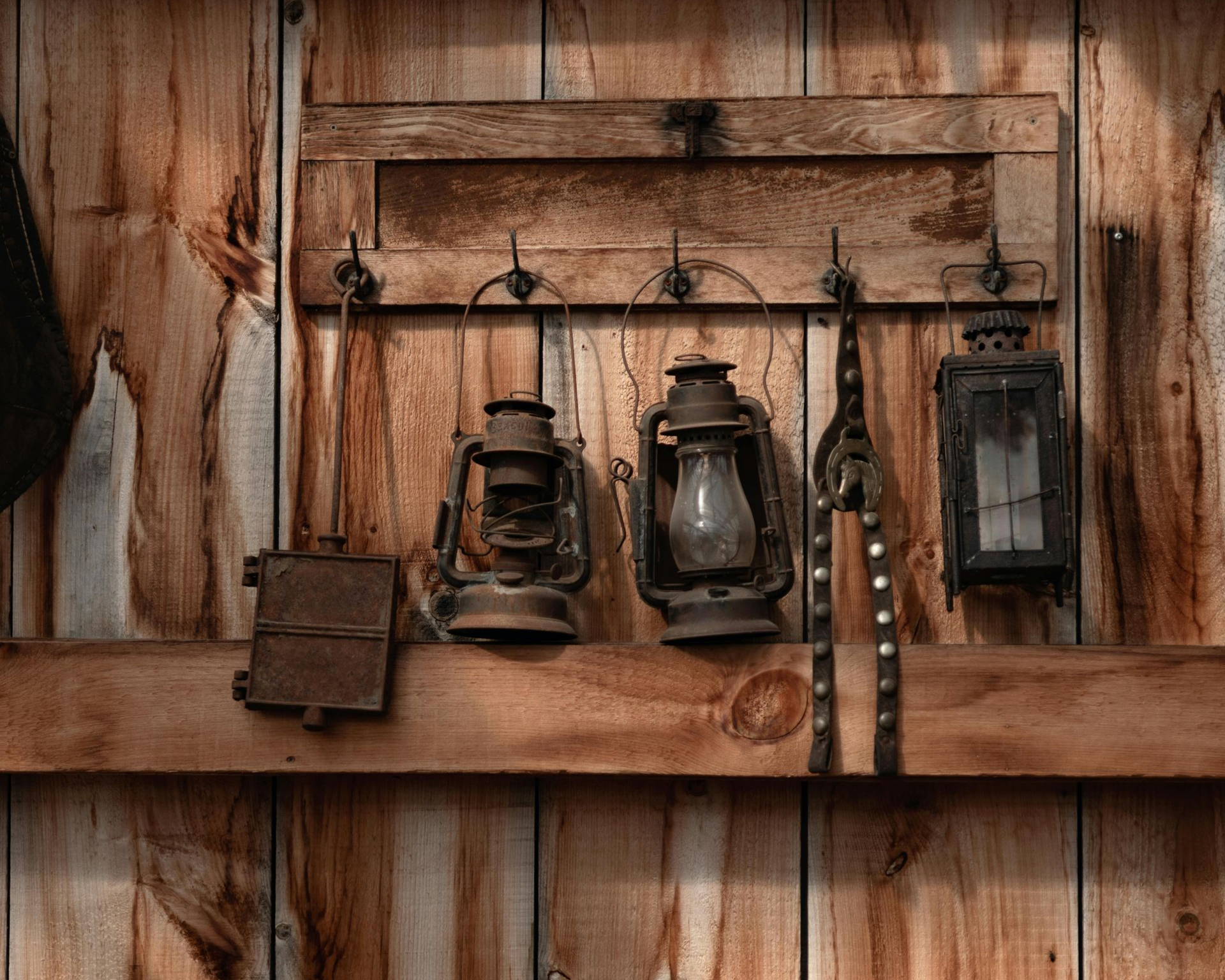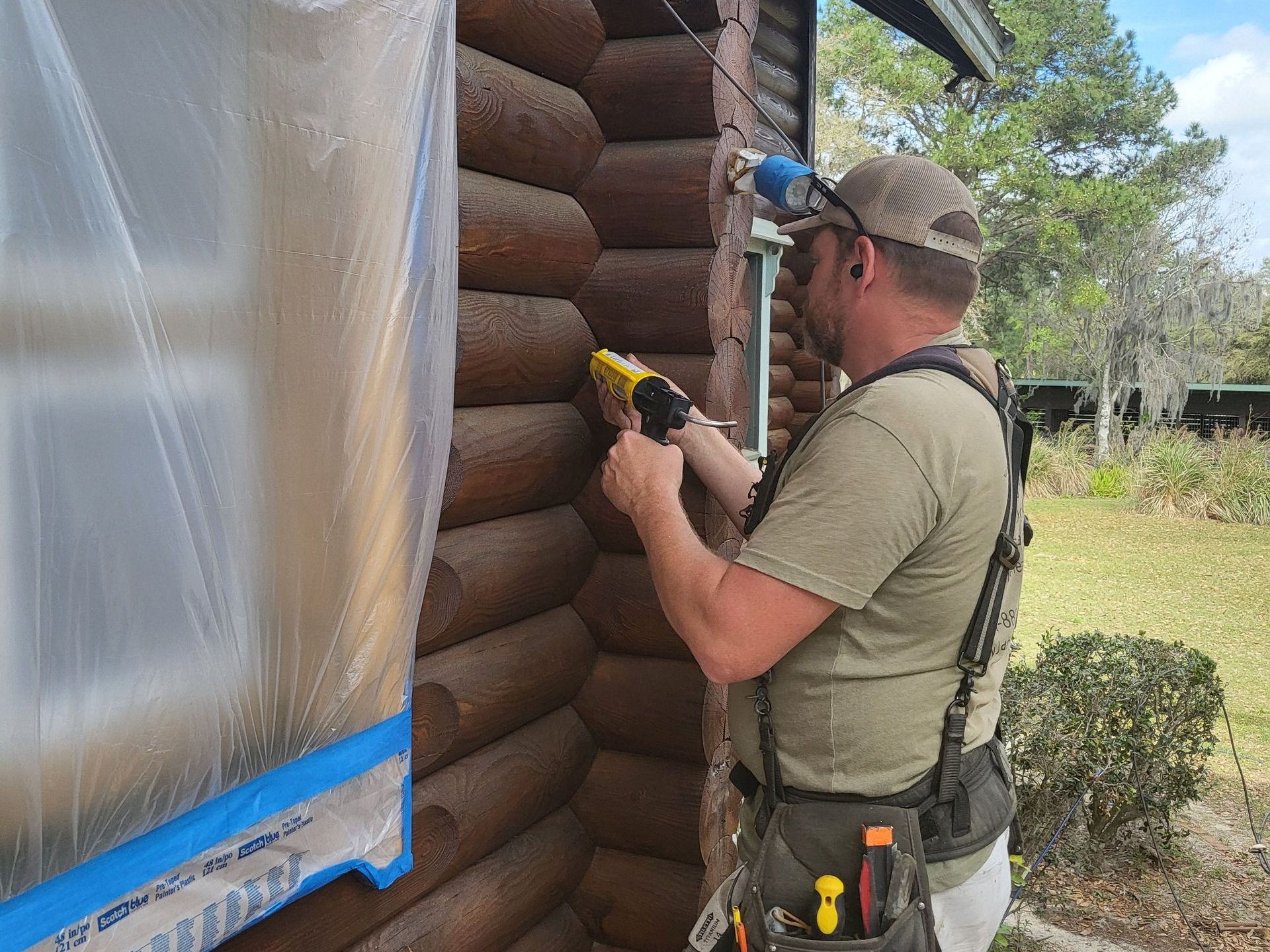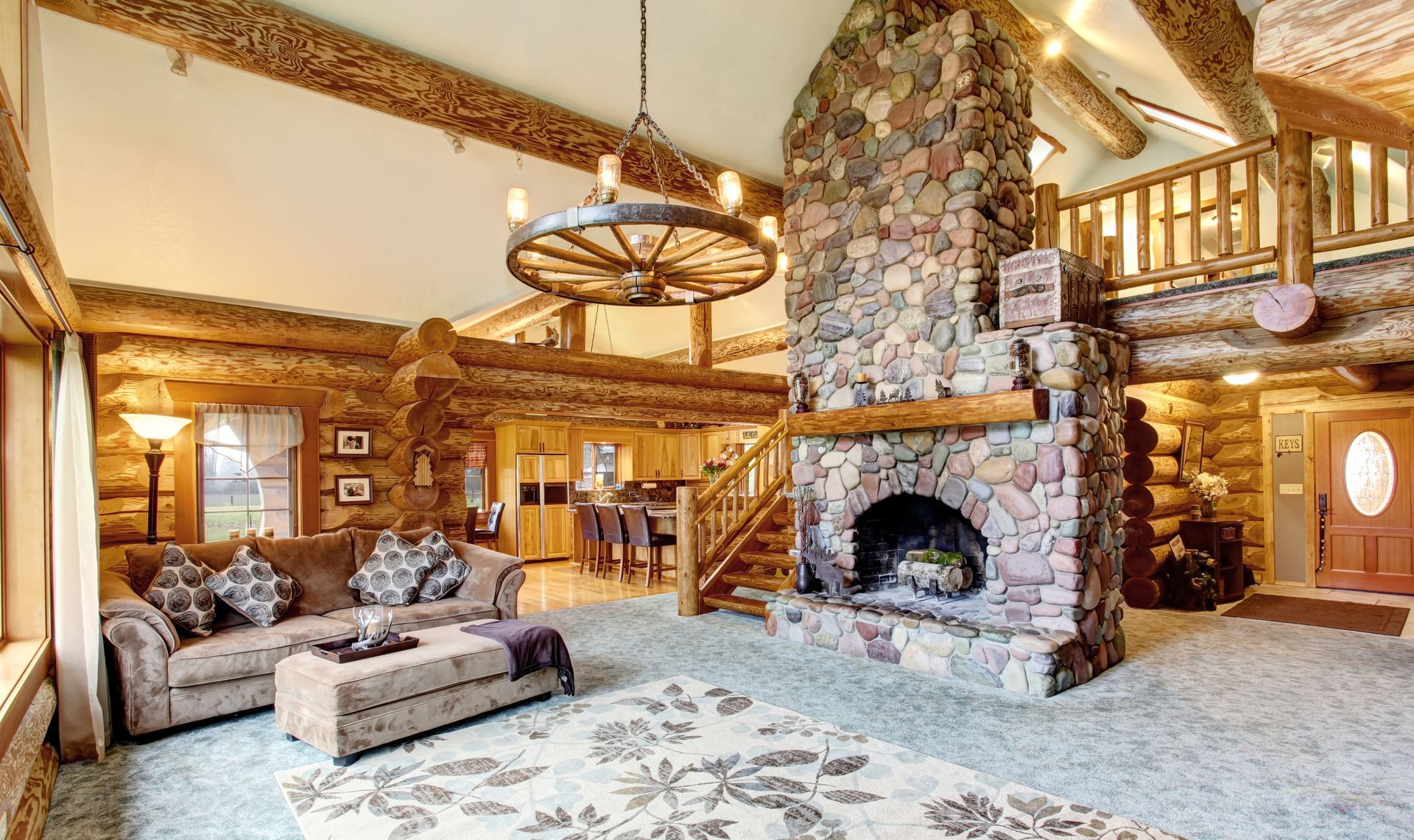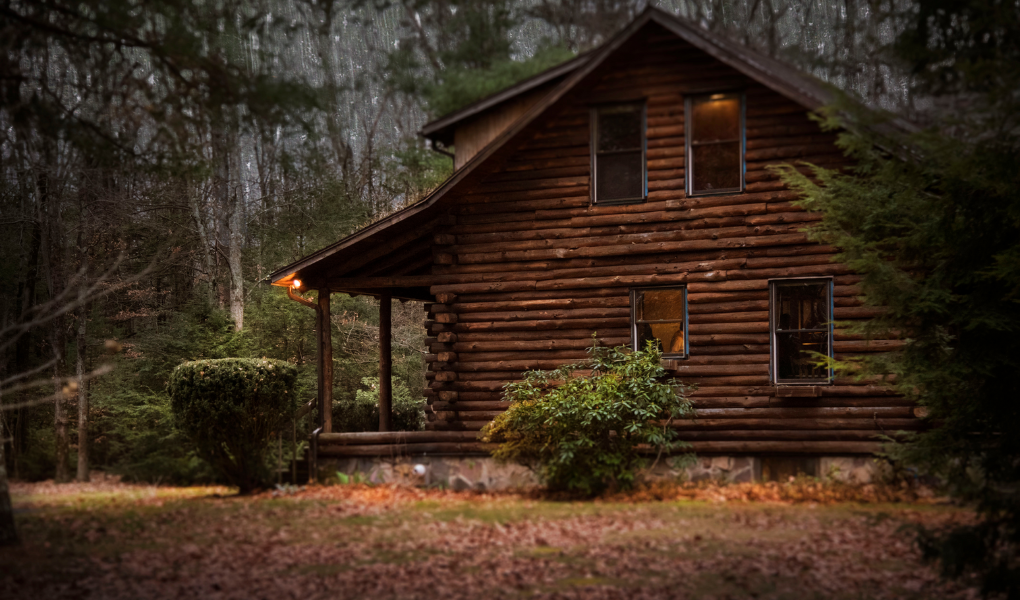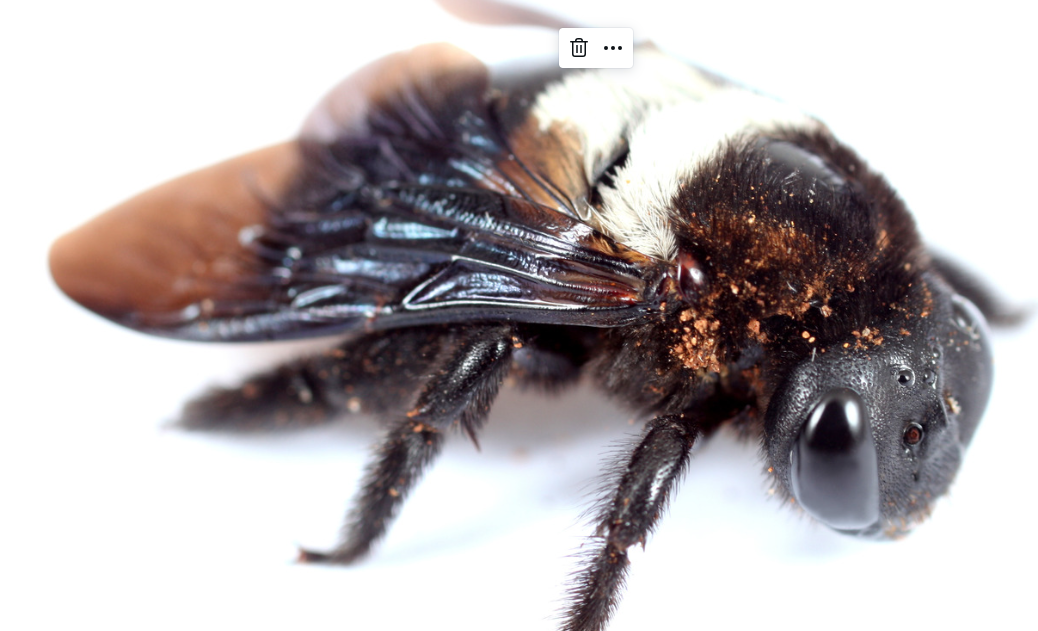The Ultimate Guide on Carpenter Bee Prevention and Treatment
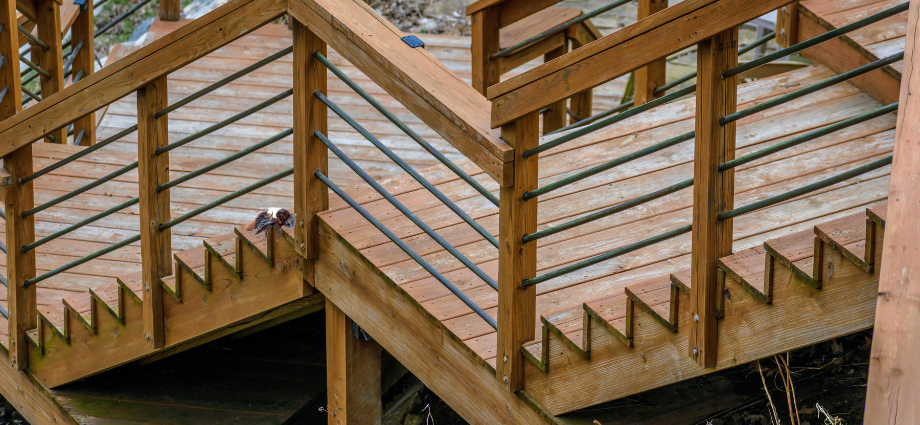
What Are Carpenter Bees?
Carpenter bees are a type of bee that are known for their ability to bore into wood, making them a potential threat to log cabins. In this guide, our log cabin maintenance experts will discuss what carpenter bees are, their behavior, and how to prevent them from damaging your log cabin.
Identification
Carpenter bees resemble bumblebees but have distinctive characteristics:
- Appearance: Shiny, hairless abdomens.
- Gender Differences: Males have white head markings and cannot sting; females have black heads and can sting if threatened.
- Sometimes they are referred to as Wood Bees.
Habitat and Behavior
Carpenter bees are known for their ability to bore into wood, which is where they get their name from. The female carpenter bee will create a perfectly round hole, about 1/2 inch in diameter, in wood structures such as logs, decks, and eaves. They will then create tunnels inside the wood, where they will lay their eggs and store food for their larvae. This behavior can cause significant damage to log cabins if left unchecked.
Carpenter bees are solitary insects found throughout the United States. They prefer different types of wood based on their geographic location:
- Western Species: Favor oak, eucalyptus, and redwood.
- Eastern Species: Target pine, redwood, fir, and cedar.
Invasive Nature and Impact
Carpenter bees are an invasive species of bee that can cause serious damage to your home, log cabin, and other nearby wood structures. These solitary bees nest alone and do not produce honey, nor are they beneficial pollinators.
Wood Damage Caused by Carpenter Bees
Nesting Habits
Carpenter bees drill perfectly round holes into wooden surfaces to create nesting sites for laying eggs. These tunnels can extend several inches and weaken the structural integrity of your home over time.
What are the signs of infestation
- Visible Holes: Round holes in wood surfaces.
- Sawdust: Accumulation of sawdust near entry holes.
- Staining: Yellow stains below the holes due to bee excrement.
Prevention Strategies
Ensure that your log protection/sealing system is in top shape. Our Strategy at LTS for Carpenter Bee management is a 3-step process and is as follows:
1. Get them out- We use a hand bellows and inject an insecticide into the carpenter bee holes. Within 10 minutes you will have all the bees out of the hole. (Interesting Fact: Many people think it’s one bee per hole. Our record is 22.)
2. Deter them from coming back—We put an insecticide and a mildewcide into the top coat of stain on any wash and stain or blast and stain service that we provide. I have seen carpenter bees chew through caulk as well as drill another hole about an inch to the left or right of the prior hole to access their same tunnel and larvae chambers. They tend to look for other bare wood areas before chewing through the stains and insecticides.
3. Give them someplace to go—We recommend you hang up carpenter bee traps, and do not paint them. They need to be bare wood to attract the bees. If you have removed the bees from your cabin and sealed it appropriately the remaining bees will be flying all overlooking for a new place to call home. Give them a trap.
Usually, Carpenter bees are looking for an area that out of the weather, protected, and they usually start in areas where the wood is warmer which is ideal for their larvae. For these reasons they tend to start on the soffit, facia, and thin trim boards and around windows on the sunny side of the home.
We have found that you really need to do all 3 steps to be effective since the bees will continue to utilize the same holes.
Regular Inspections
- Do seasonal checks: Inspect your log home regularly, especially during spring when carpenter bees are most active.
- Seal cracks and crevices: Ensure all cracks and crevices are sealed to prevent bees from entering.

Treatment Methods
Chemical Treatments
Pesticides
- Application Timing: Apply a liquid insecticide in early spring, then treat it regularly throughout the summer.
- Dust Insecticidal Powder: Dust insecticidal powder into the holes in the spring just before the adults emerge. For best results, apply pesticides at dusk when the bees are less active.
- Effectiveness: Powder pesticides are better than liquids because they don't absorb into the wood as quickly and last longer.
- Safety Precautions: When using pesticides, wear protective clothing, gloves, safety eyewear, and a dust mask.
Insecticide Application
- Direct Application: Apply insecticides or borate dust additives directly into nest sites. These can be mixed with stains or topcoats to enhance efficacy.
- Pesticide Sprays: Spray pesticides during peak activity periods (spring and late fall) and reapply every 7 to 14 days.
Physical Treatments
Treat and Seal Holes:
- Injection: Inject insecticide into existing bee holes to kill the bees.
- Sealing: Leave treated holes open for two weeks to ensure all bees are exterminated before sealing with wood putty or caulk.
- Prevent Recurrence: Treat and plug any holes you can reach, as existing holes attract more bees. Carpenter bees can return to the same place year after year, so it's important to take action to prevent them from weakening the structure they're nesting in.
Repellents
- Essential Oils: Spray the area around the holes with deterring scents like peppermint, tea tree, or lemon essential oils.
- Almond Oil: Apply almond oil to wood or the outside of the nest to repel bees. To discourage nesting, spray a mixture of almond oil and water on susceptible areas a few times in the spring.
Traps and Integrated Methods
Successful carpenter bee treatment can be completed in two steps: applying a topical carpenter bee spray followed by dusting and plugging individual carpenter bee holes. Carpenter bee traps can also be used to help control the pest population.
Additional Tips for Log Homeowners
Landscaping and Environment
- Maintain Vegetation: Trim back vegetation near your home to reduce its attractiveness to bees.
- Use Screens and Barriers: Install screens or barriers at potential entry points to prevent bees from accessing your home.
Routine Maintenance
- Regular Upkeep: Perform routine maintenance to keep your home in good condition and deter pests.
- Moisture Control: Keep wood dry and well-ventilated as moisture can attract various pests.
Professional Help with Carpenter Bees
Carpenter bees can be a nuisance and a threat to log cabins, but with the right knowledge and preventative measures, you can keep them at bay. For persistent infestations or substantial damage, professional help is recommended.
Log & Timber Solutions has helped many end the destruction that wood or Carpenter Bees do to log cabins. Call us today and let's talk about your carpenter bee treatment plan.


